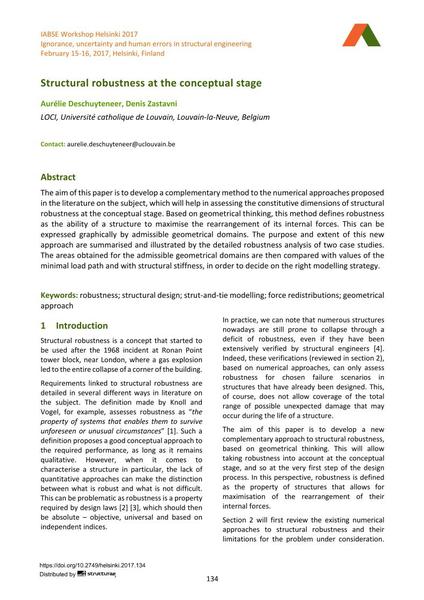Structural robustness at the conceptual stage

|
|
|||||||||||
Bibliografische Angaben
| Autor(en): |
Aurélie Deschuyteneer
(LOCI, Université catholique de Louvain, Louvain-la-Neuve, Belgium)
Denis Zastavni (LOCI, Université catholique de Louvain, Louvain-la-Neuve, Belgium) |
||||
|---|---|---|---|---|---|
| Medium: | Tagungsbeitrag | ||||
| Sprache(n): | Englisch | ||||
| Tagung: | IABSE Workshop: Ignorance, Uncertainty, and Human Errors in Structural Engineering, Helsinki, Finland, 15-16 February 2017 | ||||
| Veröffentlicht in: | IABSE Workshop Helsinki 2017 | ||||
|
|||||
| Seite(n): | 134-141 | ||||
| Anzahl der Seiten (im PDF): | 8 | ||||
| DOI: | 10.2749/helsinki.2017.134 | ||||
| Abstrakt: |
The aim of this paper is to develop a complementary method to the numerical approaches proposed in the literature on the subject, which will help in assessing the constitutive dimensions of structural robustness at the conceptual stage. Based on geometrical thinking, this method defines robustness as the ability of a structure to maximise the rearrangement of its internal forces. This can be expressed graphically by admissible geometrical domains. The purpose and extent of this new approach are summarised and illustrated by the detailed robustness analysis of two case studies. The areas obtained for the admissible geometrical domains are then compared with values of the minimal load path and with structural stiffness, in order to decide on the right modelling strategy. |
||||
| Stichwörter: |
Tragwerksentwurf Robustheit
|
||||
